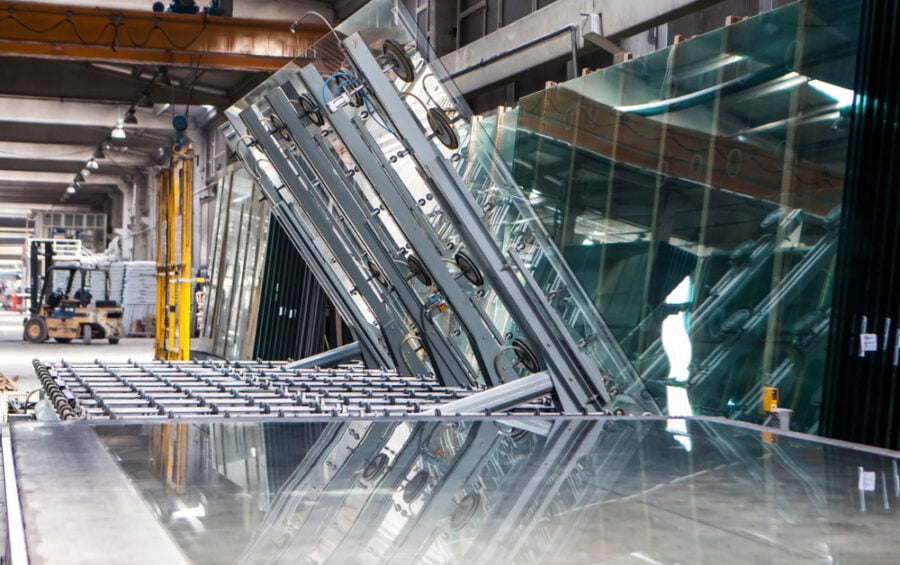Urban expansion, especially in the Gulf Cooperation Council countries, has led to a high consumption of glass, since most projects are based on this material as an alternative to heavy materials, especially in external structures.
But a new reason has been added to the rise in consumption, which is the production of solar mirrors and solar panels, where the demand for them is rising dramatically with the aim of diversifying energy sources.
The growth includes the manufacturing of glass in all its forms, including the most commonly used reinforced flat glass, colored or tinted, and tempered, laminated, rod or tube forms.
In addition, we have glass mirrors, insulating glass units, bottles, glass containers, drinking cups and household items, and fiberglass.
Other forms include glassware for laboratories or for health or pharmaceutical uses.
Let’s not forget large watch or wristwatch glass, optical glass, imitation jewelry glass, glass agents and glass insulating fittings, glass lamp housings, and small glass figurines.
Glass market growth
The global flat glass market size is estimated to be $125 billion in 2022.
Its volume is expected to reach $135.6 billion by 2028, with a compound annual growth rate of 1.36 percent during the forecast period 2022-2028.
Flat glass captured 77.64 percent of the global market in 2021 and is expected to be valued at $109 billion by 2028.
That is, a compound annual growth rate of 1.87 percent from 2022 to 2028.
Disadvantages of glass
The rise in glass waste is one of the biggest problems facing the world. Most of it is sent to landfills without treatment, contributing to global warming and climate change.
The accumulation of glass debris can lead to the release of greenhouse gases, in addition to the risk of fires due to the reflection of the sun’s rays.

Recycling
Glass recycling can play an important role in waste management in the coming years and risk mitigation.
It is one of the most useful materials in the world, and it is 100 percent recyclable because it is made up of three different natural resources.
Glass is made primarily of silica sand (also called silicon dioxide), soda ash (sodium carbonate), and limestone (calcium carbonate).
Each time glass is made anew, raw materials are extracted from the earth and utilized, in addition to consuming a high amount of energy to melt and mix the materials together.
So, for every piece of glass that is recycled, precious raw materials are kept on Earth and significant amounts of energy are saved.
Recycled glass market
The volume of the recycled glass industry is expected to register a 6.2 percent compound annual growth rate until 2027, with a market assessment of 42,877.8 kilotons.
Today, producers of recycled glass are developing ways to enhance efficiency and improve the quality of their overall products.
For example, the clear glass segment will generate about 16.5 million tons of recycled glass market size by 2027, due to its wide use in the glass industry, which leads to high demand for it.
Besides, the panel glass segment will generate about $1.5 billion of the total recycled glass market by 2027.
These recycled panels can be used in the manufacture of bottles, fiberglass, glass windows and in many industries, and contribute to reducing the amount of raw materials required.
In addition, it can be used to mix cement in concrete construction or asphalt for road construction, or with ceramics and with clay to improve soil quality.
The growth of the market for all types of recycled glass is due to it being widely used in many industries such as food and beverage, automobile, construction, healthcare, aviation, defense, etc.
Moreover, initiatives related to waste management, an increase in the recycling rate, and an increase in public awareness about sustainable development have led to significant growth due to the increase in the number of facilities related to production and processing.
The Gulf
As for the Gulf, the policy of recycling and solid waste management is the basis of the future vision of the Gulf Cooperation Council (GCC).
For example, targets set by the UAE at the local level include treating 75 percent of solid waste, including glass, by 2025, and 85 percent by 2035.
This is as well as reducing local solid waste production to 1.4 kg per person per day by 2025.
Saudi Arabia, for its part, has found an economic solution to its solid waste, which generates 17 million tons annually, and has established centers for recycling to benefit from waste in producing alternative fuels.








